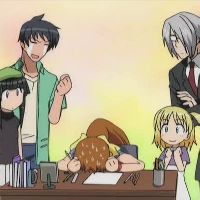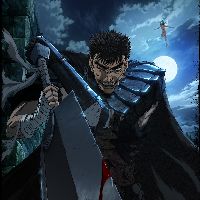Welcome back guys to part three of this four part series on How to Make an Anime (the crowd goes wild). This week we will be covering scripting and storyboarding. These two components are extremely important when working with a team. They help people understand exactly how you envision a scene. And even if you are working on your own you should not skip out on these two steps as they help you understand where you are coming from, where you are going, and how your characters will get there.
If you didn’t read the previous article then it’s time you catch up by visiting How to Make an Anime: Part 2. Ready to go? Lets jump in and get our hands dirty. Literally! Art materials are messy.
Scripting

I am going to start off with scripting first but you don’t have to. Writing your script can take place before you have any scenes, it can take place while you are creating your scene or it can be done once you already have a scene on paper. This is entirely up to you.
Scripting is a rather time consuming process but when done right can be very rewarding in its own way and can add a lot of soul to your final creation.
Now I am not going to go into detail when it comes to scripting as it is not really something I enjoy doing. It’s probably my least favorite step in the creative process but it is a necessary one, and while I may not enjoy it there are many out there who do. Scripting is especially important to learn when working with studios as they will require a guide on how the character is reacting and what they are saying.
A script should contain the following:
On each page at the top of the page:
- The Title
- Episode number (if it’s a series)
- Writers name
- Page number
Your first page should contain your name, address and phone number.
Each new manga page or anime scene will start on a new page. That page will contain the scene or page number along with how many shots or frames will feature in either. You will also detail what your characters are saying and how they say it.
Eg: SCENE ONE - (6 shots)
Shot 1
(A quick description of the setting and what characters are in it.)
Character 1 [Shout]- ‘This is such an interesting article’ - (A description of what the character is doing if necessary )
Character 2 - ‘I know right?’ - (A description of what the character is doing if necessary )
You may also want to add things like sound effects and captions to the scene by inserting the following where you need them.
SFX: Sound Effects are indicated just like dialogue.
CAP: Captions should be placed where they will appear in the scene.
[OP]: Off-Pannel refers to someone who is not in the shot
These are just a few things you can describe while creating your script. You will continue this way until you’ve created all of your scenes.

If you guys want to see the full document you can visit this page.
Storyboarding
Unlike scripting, storyboarding is a lot of fun! With this you will finally be able to start making your idea a reality. Its at this point that you can start to see the fruits of your labour and you’ll understand that all of the steps before this one were not in vain.
By this point you should understand what you are going to put on paper, have a vision of the scenes in your head, and now it’s just a matter of putting them on paper. I do advise, though, that you do a little research during this step. I can show you the basics but using angles and creating scenes takes practice. Watch as many movies and anime series as possible. Read manga and pay attention to the scene setting and shot angles. Manga especially is a potent medium with regards to expressing emotion in a scene so use that to your advantage.
A storyboard consists of shots in a scene much like a comic book, except that these will be used to explain to an artist or team of artists what you see in your mind. The difference between storyboarding and making a comic is that you want to be able to show motion and not just have static images. To do this you will use things like panning and zooming which are displayed in a certain way in the storyboard. So let's jump into some of these techniques.
Establishing shot
You will want to start each scene with an establishing shot. This is a shot of the place and time the scene will be set in. If your characters are going to start their scene in their secret base then you should start with a shot of the base, an aerial view or a shot of the entrance. If you want to show the time period then perhaps a semi-aerial view of a busy London street with people dressed in Victorian attire is more suited. This helps set the scene for the viewer and they will be able to understand what they are seeing better.

Head shots (Talking heads)
Head shots are simply shots of a character’s face used to display the emotion they are going through. Take a look at the one below of Rin Okamura. Isn't it cute when he's blushing? These shots are very common but can be used to create great impact on the viewer and help them understand the gravity of a situation. However, head shots can also be the lazy man’s fallback which is why I advise that you should always look for another, more inventive way of displaying emotion. Be it an intimate touch of the hand in a love scene or zoomed in view of a character's eyes widening in shock during a fight scene. These kind of ‘subtle’ shots means that the viewer doesn’t become too used to the character's facial expressions and the impact of said emotions.

Close ups
Close-ups are used to emphasize something in a scene or shot. A close up of a bloodied knife indicates its importance in a murder scene. But a close up of a girls panties is just fanservice. Both serve their own purpose. Close-ups can be used to attract attention or distract the viewer from something happening in the background of the scene. Use them wisely.

Camera movement in scenes
When making a storyboard one has to remember that you can indeed indicate camera movement. To do this, one will need to create a bigger scene and then box out the desired camera shots showing motion.

-
Panning is shown by having two boxes on either side of the scene and an arrow between them to show the direction of movement.
-
Zooming is indicated with arrows facing in or out of the scene.
-
Tracking a character’s movements is indicated by arrows following the character.
These are just a few examples of how one can show camera movement in storyboarding.
Remember that when creating your scenes you need to be able to make other people understand your vision, but that doesn't mean that you have to be restrained to the norm. Be creative and be yourself because that is what makes your story different to everyone else's. Most importantly have fun and be dedicated. It's a long road to making an anime or manga and you will just need to keep pushing forward in order to achieve your goal.
Alrighty, that's it for this weeks installment, stick around for our fourth and final part of How to Make an Anime. If this series has been helpful to you guys don't hesitate to check out the All Otaku profile and send me a PM with any questions. In the meantime you can find me at All Otaku Online or visit our Facebook page where we share whatever the hell we feel like.
Until next time, sayounara, and thanks for all the fish.



